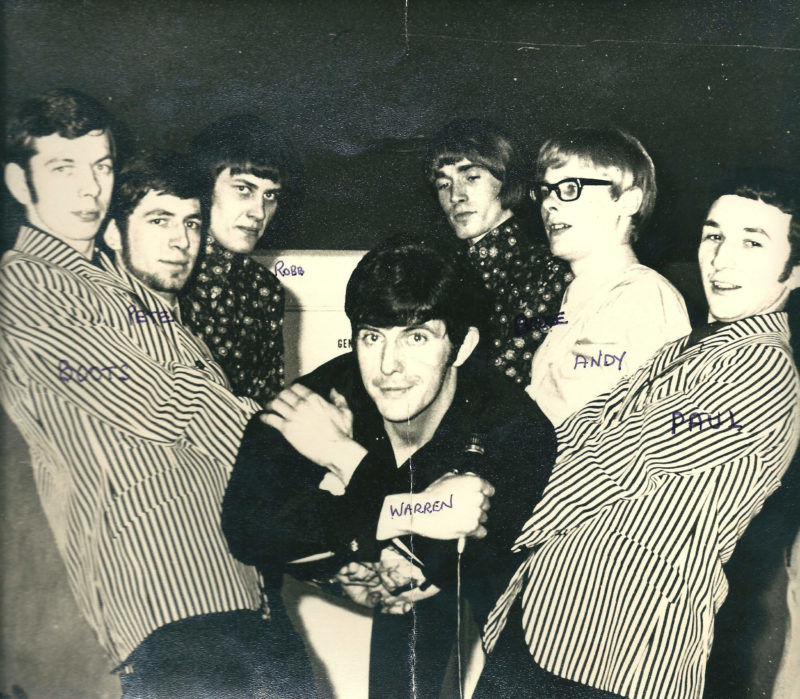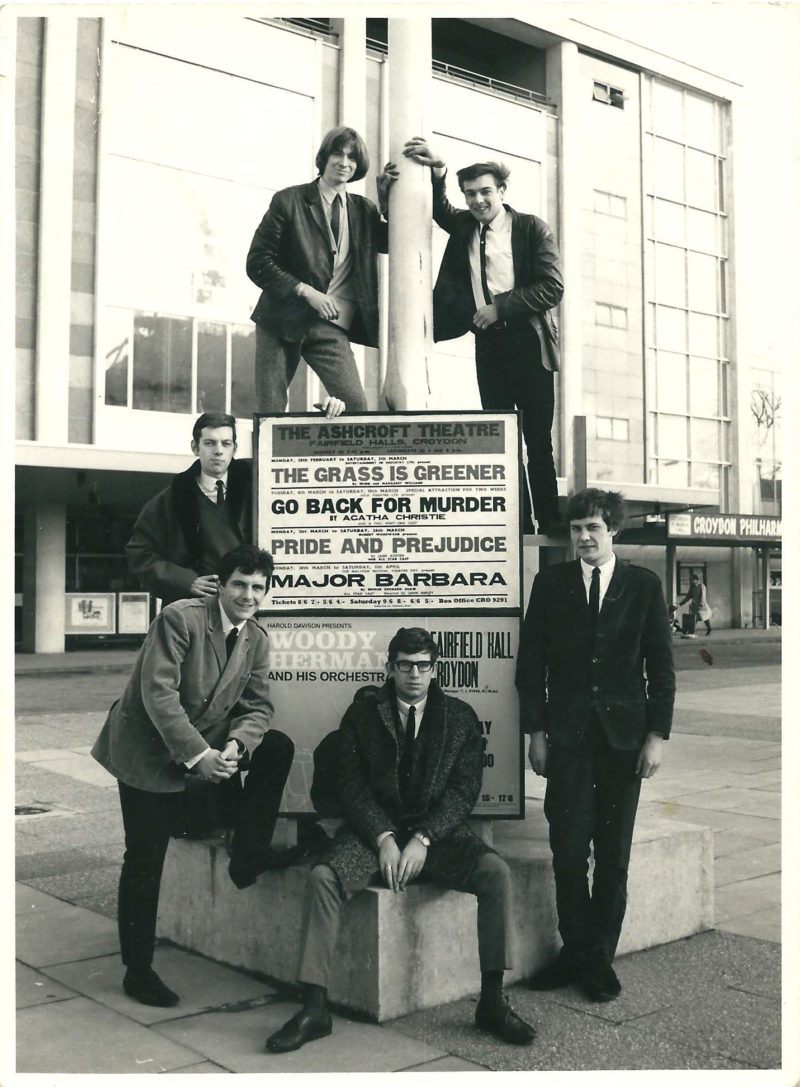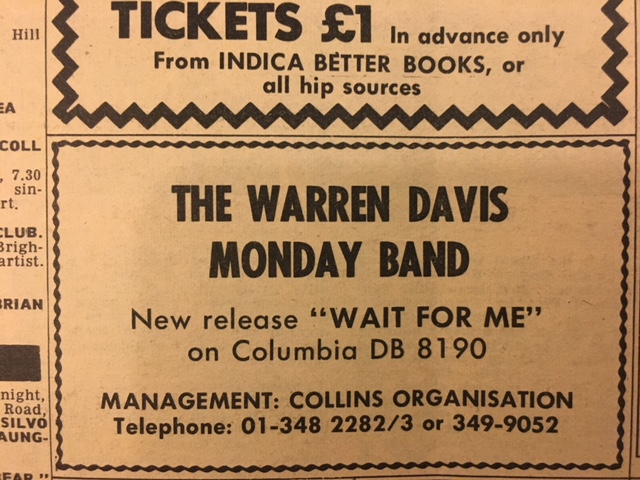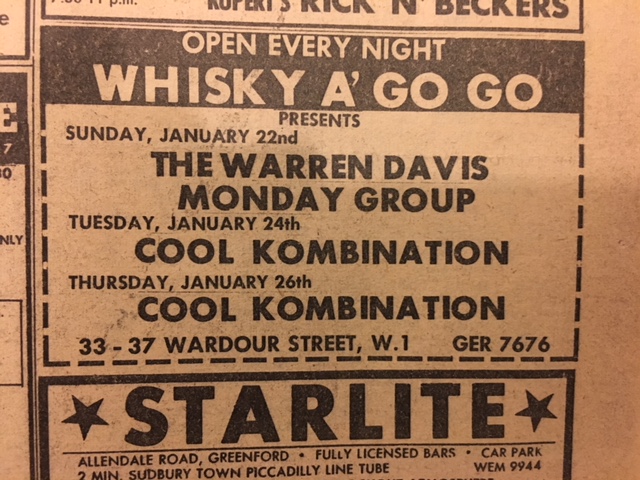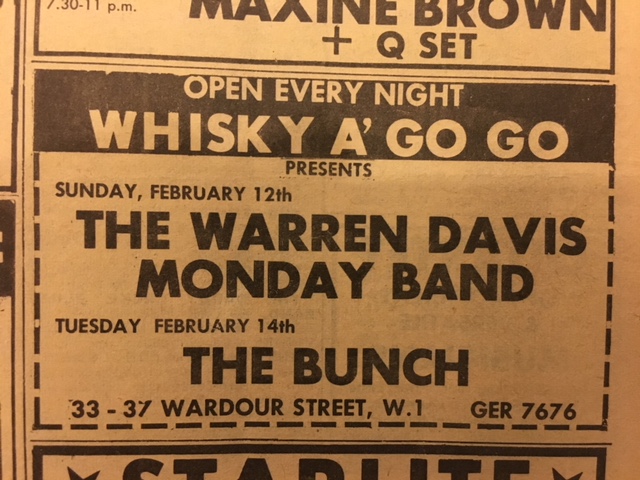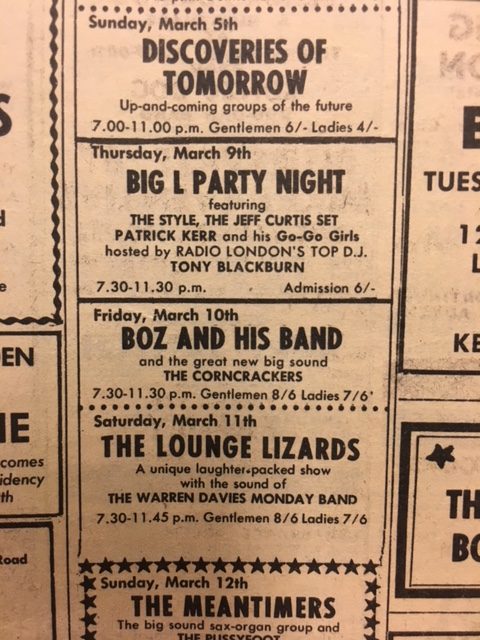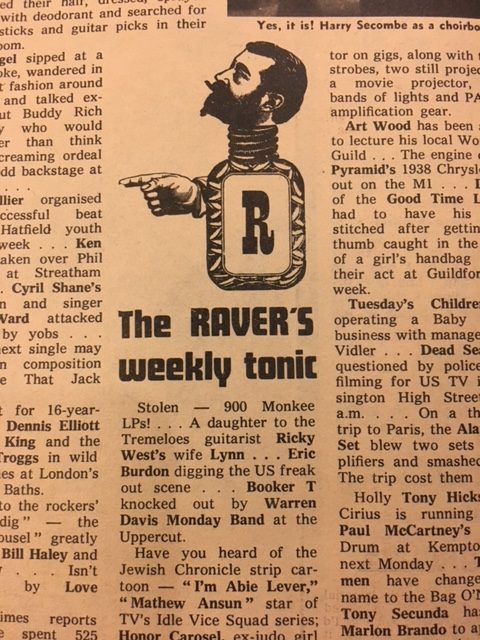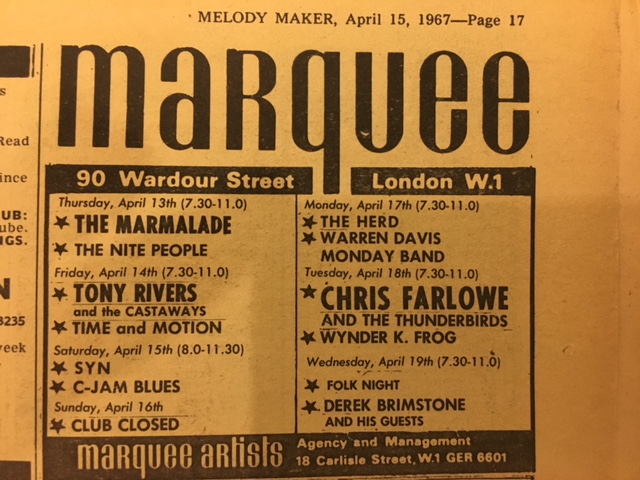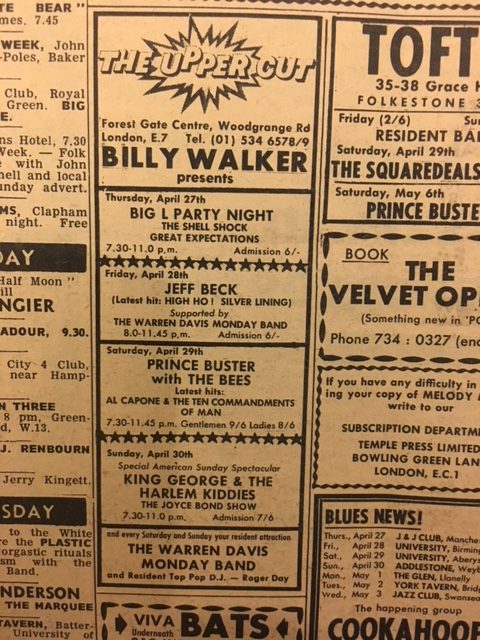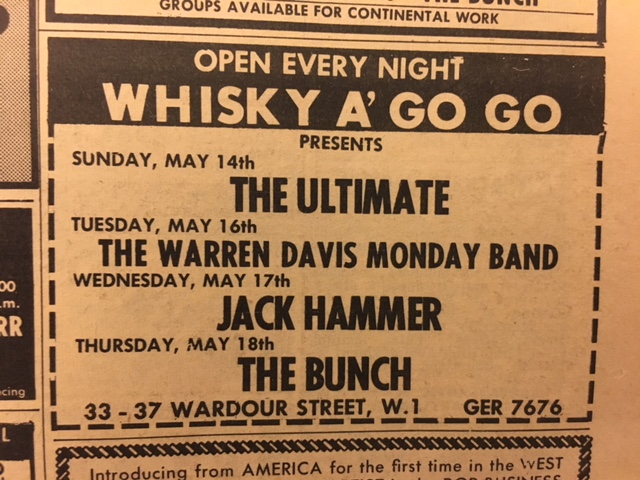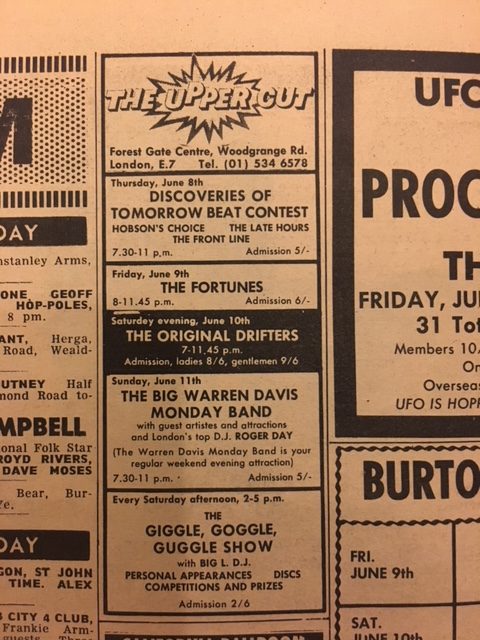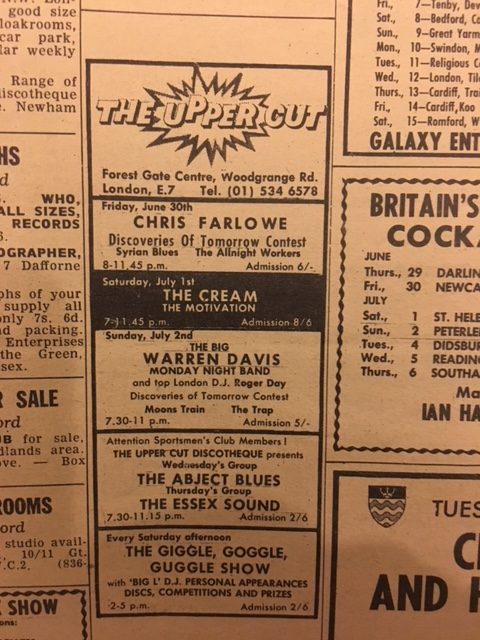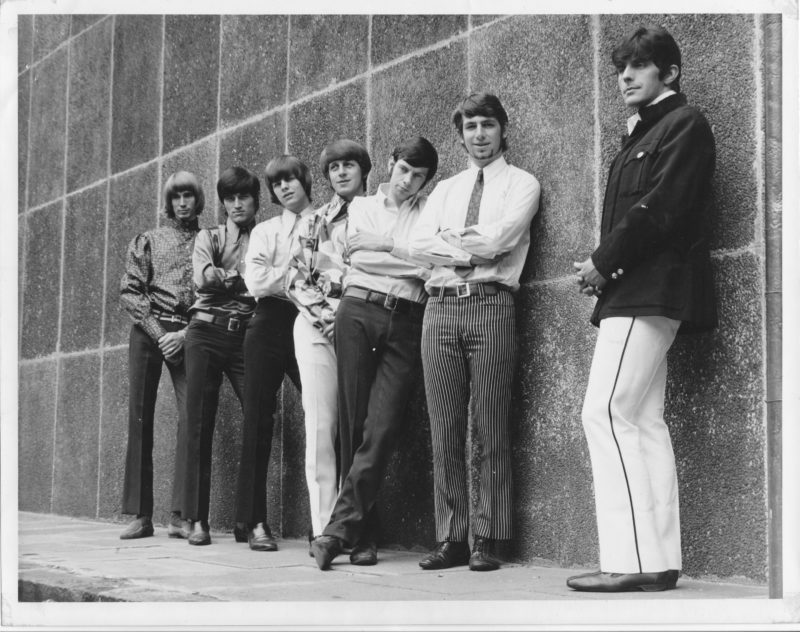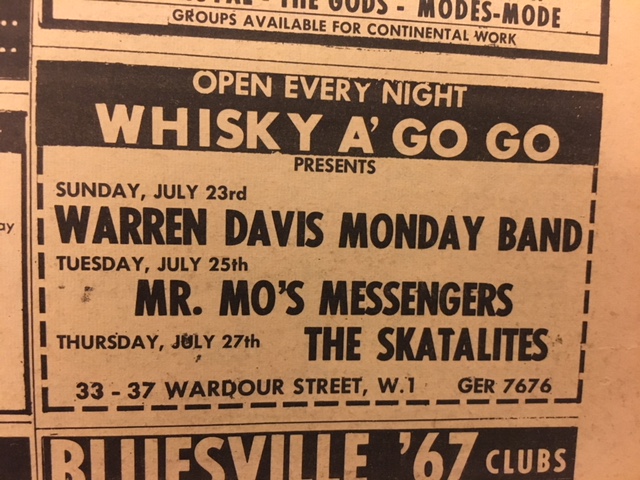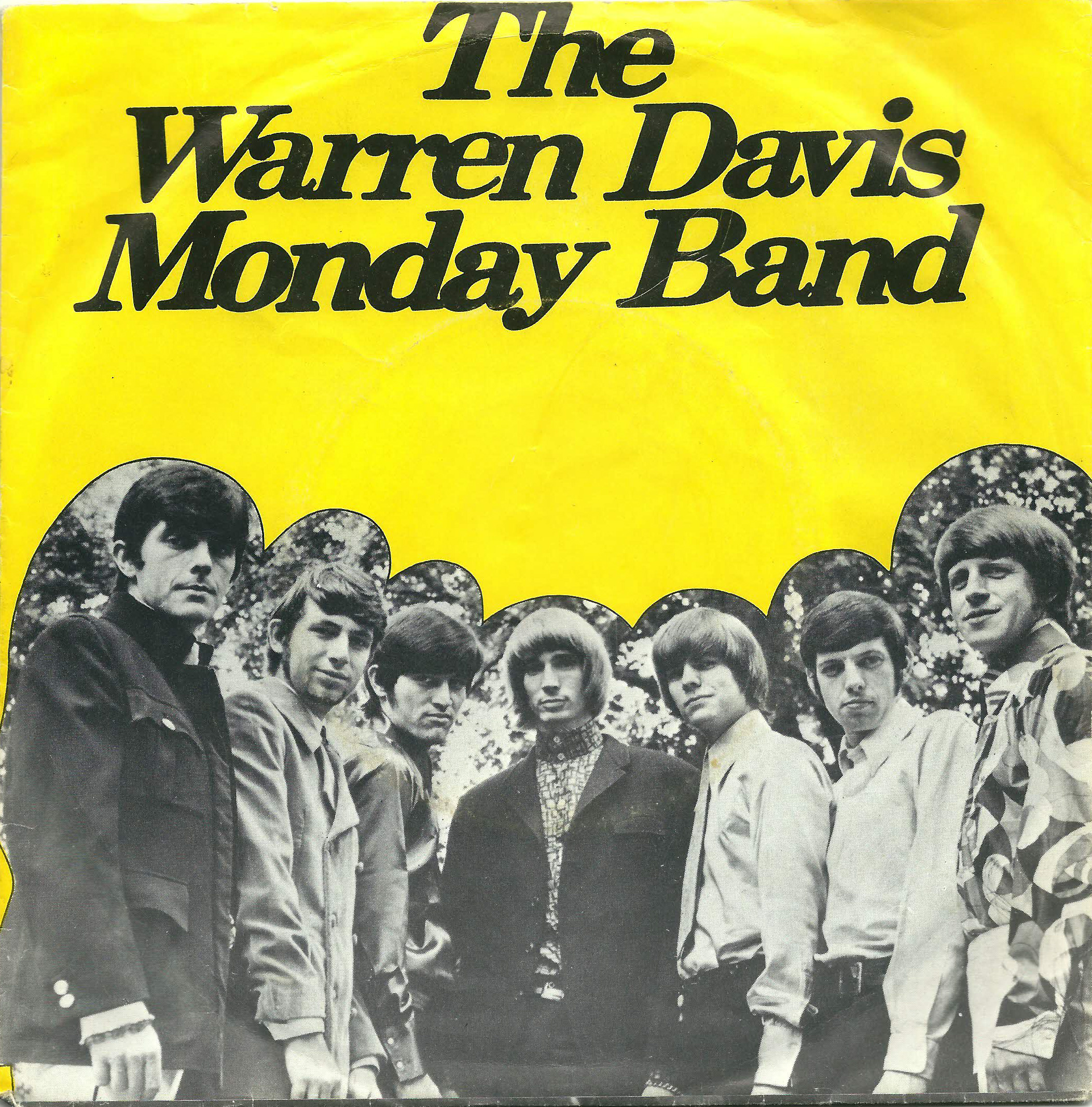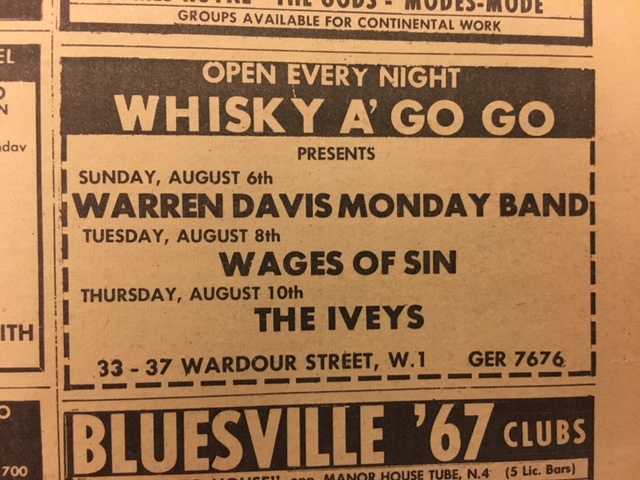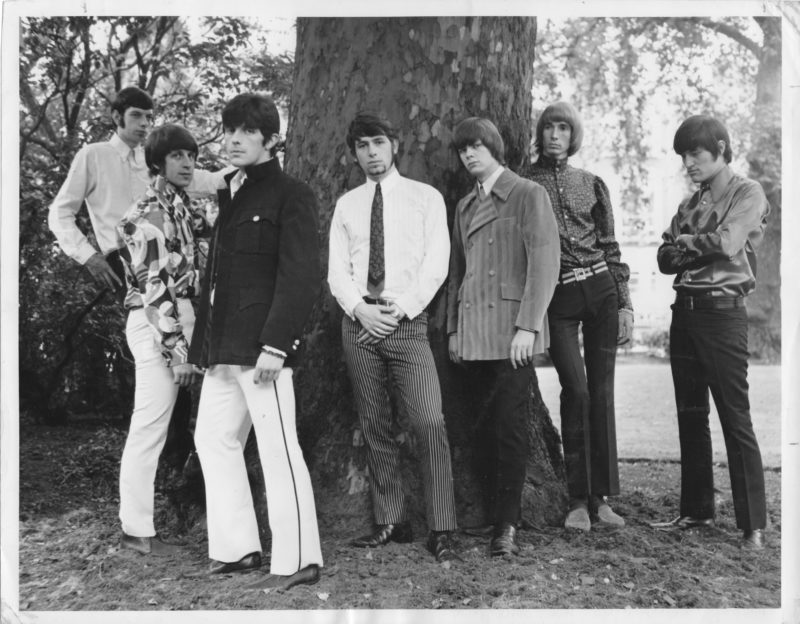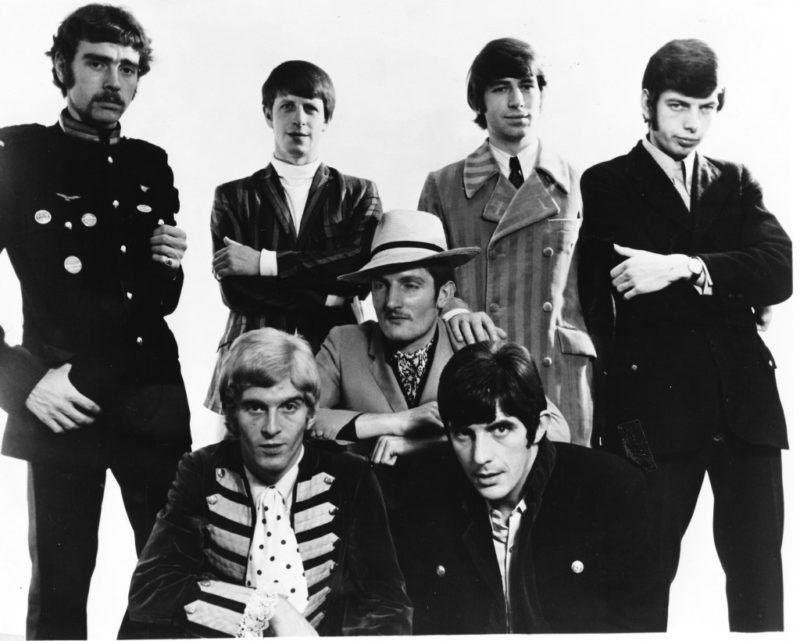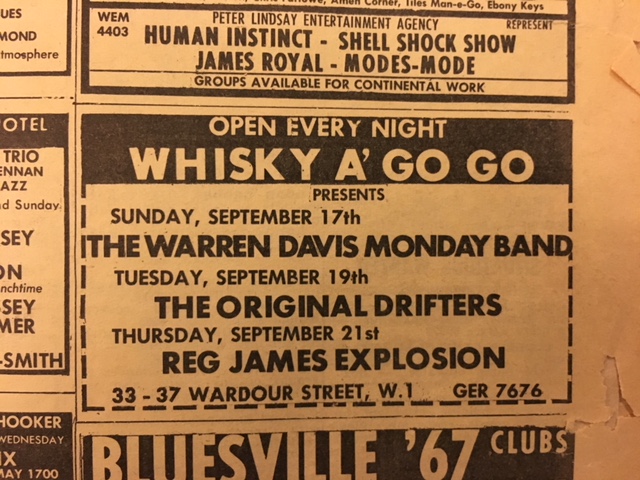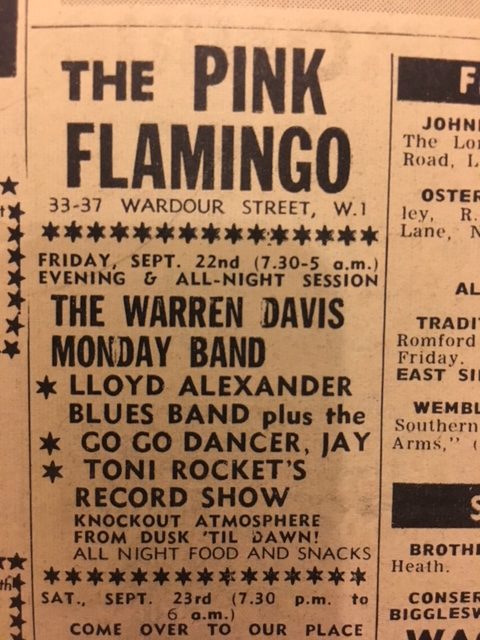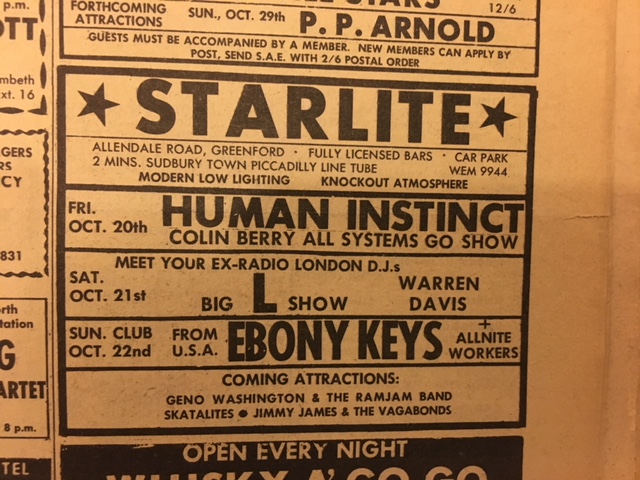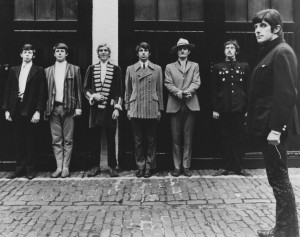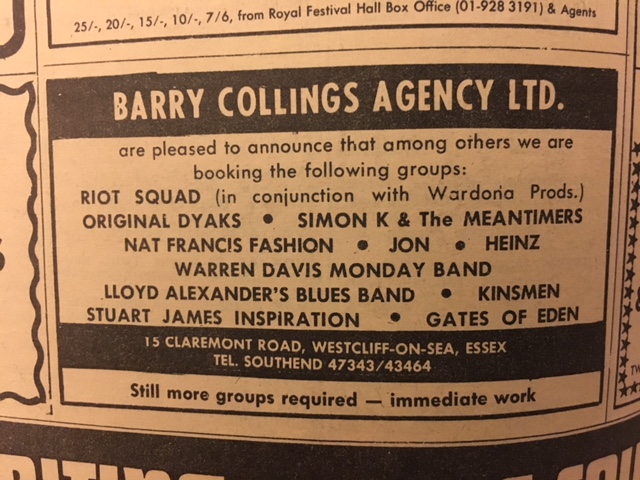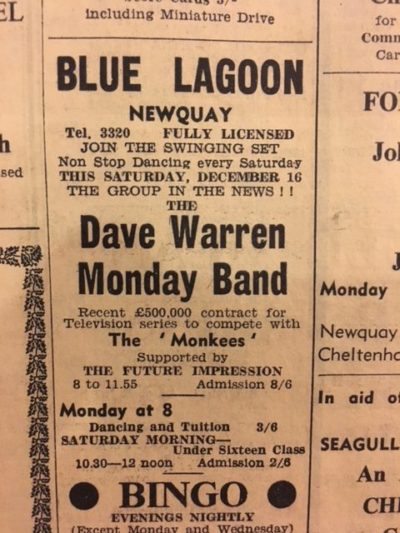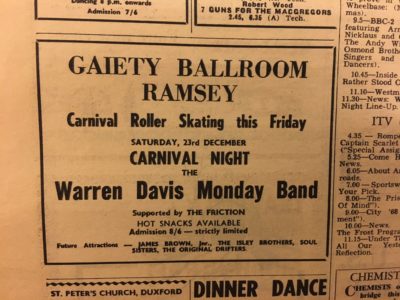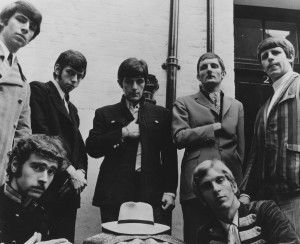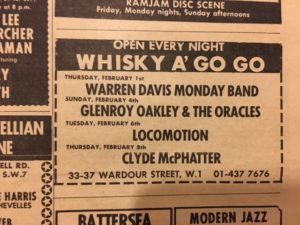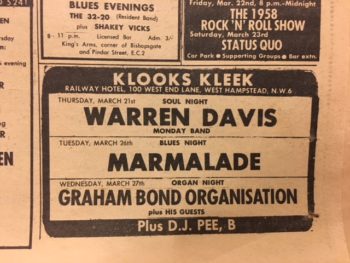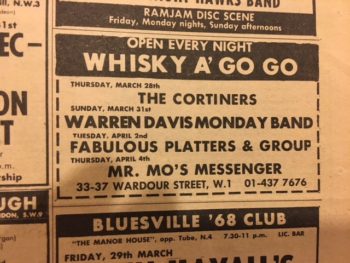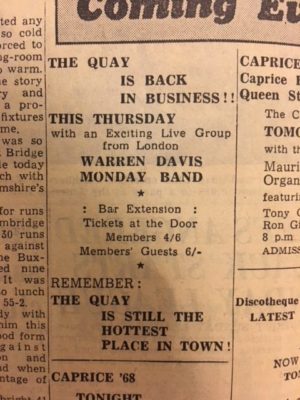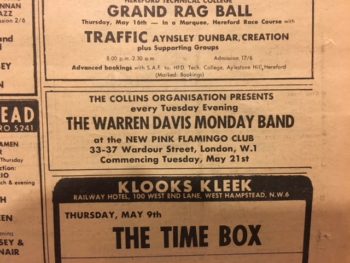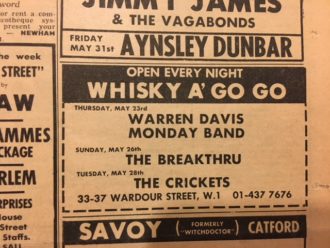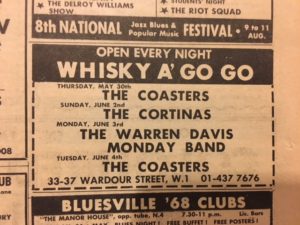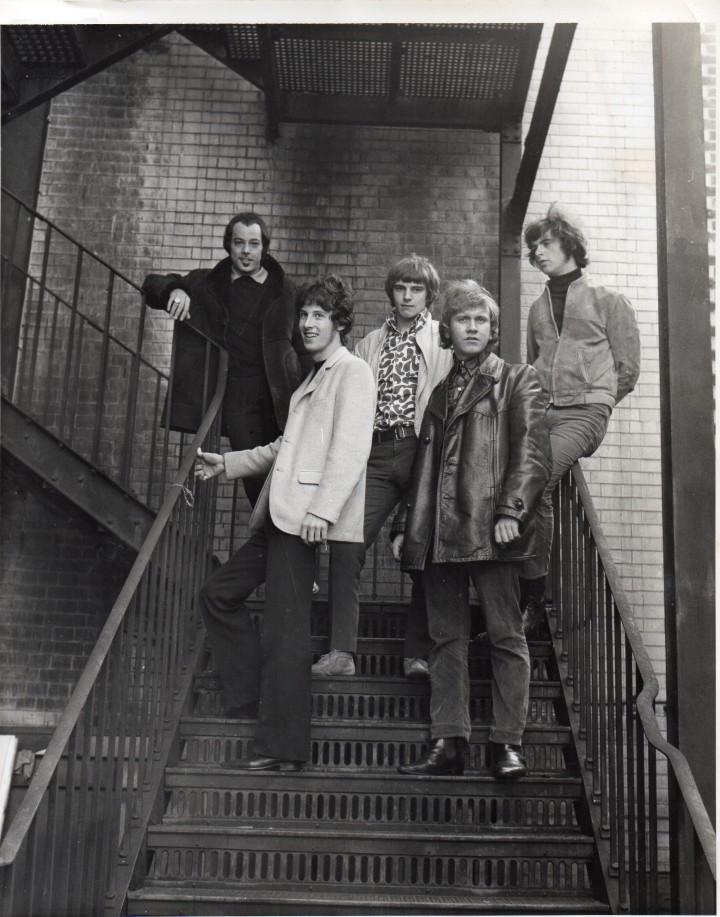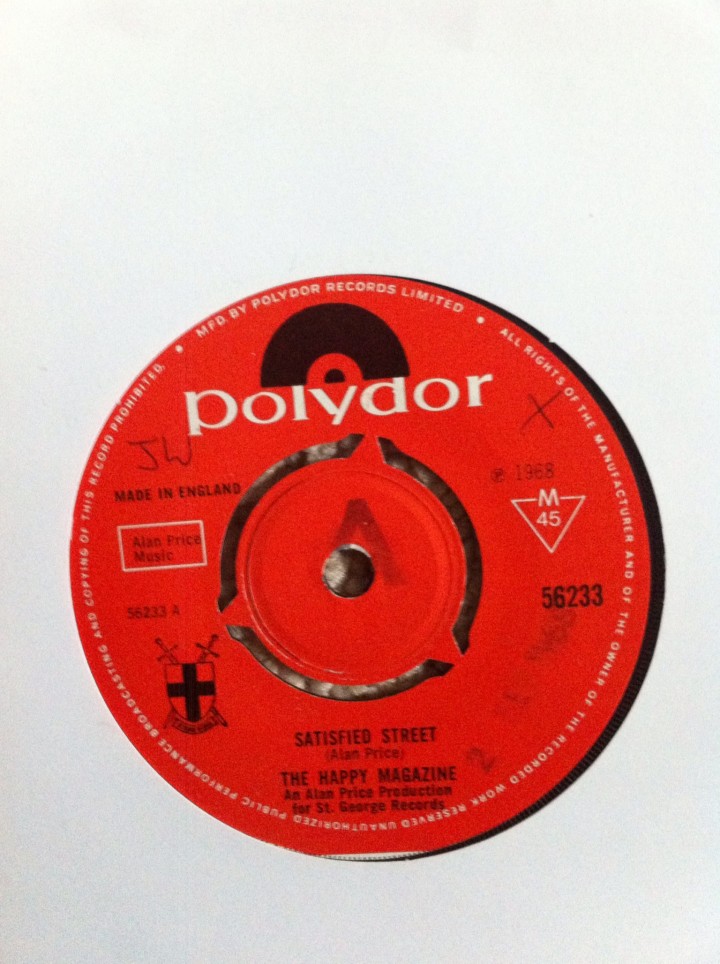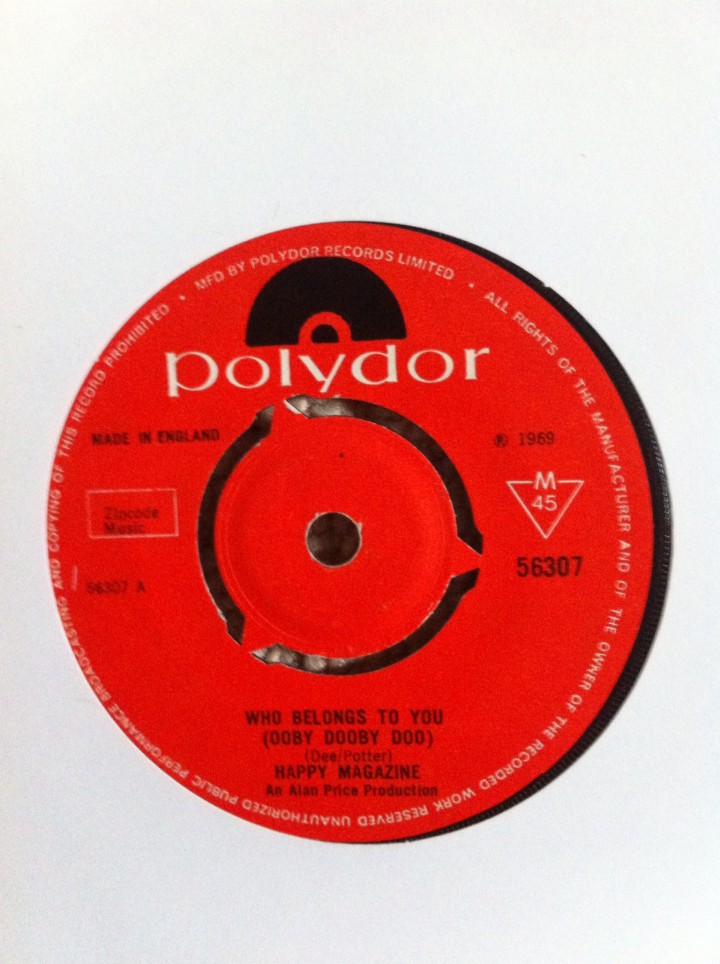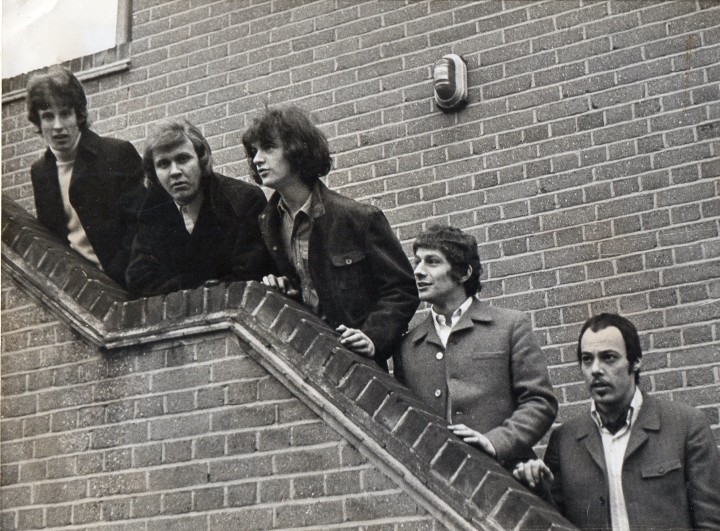
In the summer of 1974, Carl Douglas’s disco anthem “Kung Fu Fighting” was shipped just as the chopsocky film craze was taking hold. Initially, the single struggled for airplay, but later that year it stormed to the top of the UK and US charts, eventually selling over 11 million copies worldwide.
In 2014, to mark the 40th anniversary of his global chart topper, Carl Douglas was preparing a new CD for release, his first collection of new material since 2008’s Return of the Fighter.
Although the long-awaited release never appeared, fans were treated to a superb compilation from revered collectors’ label Acid Jazz, issued on 30 June 2014. Pulling together much of Carl Douglas’s recorded work during the mid-late 1960s, including a cache of previously unreleased tracks, the collection finally casts a light on the singer’s little known, formative years.
To trace Carl Douglas’s rise to international superstardom, we need to go back to an afternoon in mid-1965 when the young Jamaican ventured from his home on Copleston Road, East Dulwich to his local football club’s party, and stumbled across the musicians that would come to form his first backing group – The Charmers.

Formed in West Dulwich around late 1963 by multi-instrumentalist Tony Charman (the only musician to appear in most of the many iterations of Douglas’s Sixties bands), Sounds 5 originally comprised Charman on lead guitar; Johnny Johnson on rhythm guitar; Roger Simms on bass; Nick Baxter on drums; and Tony Fuller on lead vocals.

A regular fixture at local schools and youth clubs in south London, Sounds 5 decide to adopt a new name after the band’s manager Bob Charman (Tony’s father) invited Carl Douglas to join the musicians on stage.
“Carl came up and sang with us,” remembers Tony Charman. “Our singer at the time was my brother-in-law and he was leaving, so my dad said to Carl, ‘If you want to join a group, here’s the phone number’.”
Born and raised in Jamaica, Carl Douglas had spent part of his youth in southern California staying with relatives before joining his mother and stepfather in south London where he pursued a scholarship in engineering at Southeast London Technical College from 1959-1962.
While the plan was to qualify as an engineer and return home to take over his father’s family business, Douglas had secret ambitions to become the first black professional football player at Tottenham Hotspur and was a keen and proficient player. But as fate would have it, the afternoon he attended his football club’s party at Flodden Road in Camberwell, south London changed his destiny forever.
Encouraged by his football mates to go up and sing with The Charmers, Douglas impressed the young musicians with his raucous renditions of “Long Tall Sally” and “Tutti Frutti”.
“Bob had given me his number but I didn’t call because I wasn’t quite certain how to tell my mum,” admits Douglas. “One day while I was out at football training, he called and talked to my mum and asked if I’d decided yet.”
Despite his mother’s protestations over his decision to put his engineering career on hold, Douglas called Bob Charman back and agreed to try out at a rehearsal. It didn’t take long for everyone to realise that it was a winning combination.
Rechristened Carl Douglas & The Charmers, the musicians soon established a foothold in the Brixton/Streatham/Tulse Hill area, playing pubs, youth clubs and schools.

Early on, lead guitarist Mick Patel and bass player Lee Hall took over from Johnny Johnson and Roger Simms respectively, while Charman (who’d adopted the stage name Tony Webb) moved from lead guitar to organ.
The band’s drummer then introduced his cousin Ken Baxter, who worked as an engineer at a recording studio in Crystal Palace.
“When Carl joined us, we needed some demos,” says Tony Charman. “Ken had this little recording studio, which he’d just started, so we recorded in there and then Ken was asked to be our manager.”

Impressed by Douglas’s singing, Ken Baxter oversaw the recording of a six-track demo, mixing soul standards like Otis Redding and Steve Cropper’s “Mr Pitiful”; Naomi Neville’s “Pain In My Heart”; and Wilson Pickett and Steve Cropper’s “In the Midnight Hour”, together with Carl Douglas originals – “Going Out of My Mind”, “Why Hurt” and “You Are the One I Love”.

Having assumed the band’s management from Tony Charman’s father, Ken Baxter then hawked the demos around London in a bid to secure a recording deal. The tracks ended up with A&R scout Pierre Tubbs, who had connections with the small indie label, Strike Records. Tubbs offered the band some studio time to hone its act, in preparation for some further recordings.

Around early 1966, the band’s personnel underwent another reshuffle with Ray Beresford taking over from long-standing drummer Nick Baxter. At the same time, a brilliant guitarist called Ron Bryer (aka Ron Spence), succeeded Mick Patel. A former member of The Loose Ends, the house band at Lewisham’s El Partido Club, Bryer had recently been working with another local outfit, The Revellos.

Interestingly, Mick Patel would end up joining Bryer’s former band The Loose Ends in late 1966, initially as a horn player, but in spring 1967 moved back to lead guitar and briefly joined The Canadians with a very young David Foster. Foster and Patel would subsequently join The Warren Davis Monday Band in the summer of 1967 for the single “Love is a Hurtin’ Thing”. Patel later moved out to British Columbia, Canada to work with Foster in a new band but nothing has been heard about him since.

The reconfigured line up (often billed as The Carl Douglas Set) began gigging further afield, landing a regular gig at Tiles on Oxford Street, and playing a series of shows at the Goldhawk Social Club in Shepherd’s Bush.
Back in Tubbs’s studio, and with Ken Baxter at the helm, the new formation cut two new tracks – a gritty version of Hayes and Porter’s “You Don’t Know”, coupled with a soulful rendition of “I (Who Have Nothing)”, a song taken into the US charts by Terry Knight & The Pack.
Presented to Strike Records, the label was impressed by the raw energy of the recordings to sign Douglas to a one-off single deal. However, as Baxter recalls, arranger/producer Alan Tew was sceptical that the musicians had the experience to produce “a professional, economical sound behind Carl at the time”.
Handing production duties to Pierre Tubbs, Tew decided to bring in top session players like guitarist Big Jim Sullivan, organist Harry Stoneham, trumpet player Kenny Baker and bass player John Paul Jones to provide the instrumental support for Douglas’s first single, the frantic, infectious soul number “Crazy Feeling” (credited to Tubbs-Douglas), coupled with “Keep It To Myself” (attributed to Tubbs), which was cut at Pye’s studios in Marble Arch.
Ken Baxter notes that the group almost landed a record deal with EMI Records after an encounter with producer Tony Macaulay (who would work with Douglas’s friend Clem Curtis in The Foundations) prompted a one-off session. The whereabouts of the two tracks cut remains a mystery.

While this was happening, Ray Beresford put in a good word for his neighbour – lead guitarist Del Grace, who stepped into Ron Bryer’s shoes in early July 1966.
Standing at six foot five, Grace had started out in the early 1960s with Carl Lee & The Epitaphs in the Bexley, Kent area. The band subsequently became known as The Epitaph Soul Band and then The Epitaphs. Of historic note, Grace also did several sessions with maverick producer Joe Meek at his studio on the Holloway Road during this period.
In late 1965, Grace formed Big Wheel, a local soul/R&B band, which opened for the likes of John Mayall’s Bluesbreakers and The Graham Bond Organisation at the Black Prince Hotel in Bexley. They also played at the Berlin Jazz Festival in February 1966 and undertook a short tour of West Germany, including Aachen, and Switzerland in early June.

In an entirely unplanned, albeit fascinating twist of fate, Big Wheel’s keyboard player Andy Clark (later of Clark-Hutchinson and Upp fame) decided to recruit Ron Bryer as Grace’s replacement!
When the rest of the band returned to England, Bryer stayed and joined the highly-rated Basel-based soul band, Berry Window & The Movements. Bryer later recorded with cosmic rockers Brainticket before returning to England and joining One with former Loose Ends’ singer Alan Marshall. Tragically, the guitarist died on 25 June 1973 of an accidental drug overdose.

With Del Grace in place, The Carl Douglas Set performed at George Harrison’s new nightclub Sibylla’s in central London from 22-26 August.
That same month, Strike brought out “Crazy Feeling” but inexplicably the single failed to chart, even though, according to Tony Charman, it was voted a hit on Juke Box Jury.

A few days after completing the Sibylla’s residency, bass player Danny McCulloch took over from Lee Hall. Originally from Shepherd’s Bush, McCulloch had first come to prominence with Frankie Reid & The Casuals (alongside drummer Mitch Mitchell) before landing a gig with Screaming Lord Sutch & The Savages.
After recording a lone single with The Plebs – “Bad Blood” c/w “Babe I’m Gonna Leave You”, McCulloch worked with Tony Sheridan in West Germany before returning home.
He was at something of a loose end, however, when the opportunity came to join Douglas; most likely after running into the band at the Goldhawk Social Club on his home turf.
The new bass player, however, did not hang around too long. Barely a week after opening for Otis Redding at Tiles on 18 September, he was poached by one of the England’s leading R&B singers.
“[Danny] was a talented bass player and had his own entourage of musicians in close proximity,” recalls Ken Baxter.
“It wasn’t surprising that he was soon to be poached from us by Eric Burdon, who used to visit the Cromwellian and witnessed Danny’s talent and offered him a job in his soon-to-be formed ‘New Animals’.”

Inspired by McCulloch’s bass style and unhappy on keyboards, Tony Charman took up the bass. Just prior to McCulloch’s departure, Baxter placed an advert in Melody Maker for a sax player. A number of horn players responded, including recently departed Manfred Mann member Lyn Dobson, but the band settled on north Londoner, Dave Brooks.
“We auditioned loads of sax players but with Dave Brooks he seemed to click straight away,” says Charman. “We all liked him and if you’re pro, you’ve got to get on with each other.”
Around the same time, Del Grace brought in his former band mate from the original Big Wheel (and Andy Clark’s predecessor) – Mike Manners on Hammond organ and as musical director.

Renamed Carl Douglas & The Big Stampede, after a very descriptive LP cover by US jazz band Woody Herman, the new line up’s first notable booking was Tiles on Oxford Street on 26 September.
Around this time, the musicians shared a bill with Eric Clapton’s band, Cream. Mike Manners has fond memories of the evening in question, a joint (no pun intended) booking at a university somewhere in the north of England. (Ed. Beresford says this was Nottingham University and Cream played in the city on 23 October, so this is the most likely date.)
“We were in an interval and had the same dressing room. He [Ginger Baker] handed me this huge joint and I said, ‘I’ll pass it round’ and he said, ‘No, no, no, that’s for you. I’m making one for everybody’. It was huge.”

A few days later Ray Beresford left to subsequently form Lewisham band, The National Existence. With road manager Nick Baxter briefly subbing, the musicians were photographed in Trafalgar Square.

Within a week, however, the drum stool was filled permanently by another Big Wheel member – Derek ‘Del’ Coverley, who returned from Switzerland where he was playing at the Hotel Hirschen in Zurich’s red light district.
Inspired by Jack Parnell, the drummer in the house band at the London Palladium, and jazz musicians Buddy Rich and Gene Krupa, Coverley had started playing drums in his early teens. After working with his school band, The Scimitars for several years, he signed up with Big Wheel at the tail end of 1965, taking over from original drummer Rick Dyett.
With only lead singer Paul Stroud and Del Coverley remaining from the original line up in July 1966, Big Wheel (Mark 2) now included bass player Mick Holland and organist Andy Clark from The Epitaph Soul Band and Del Grace’s predecessor in The Carl Douglas Set, Ron Bryer.
The new configuration developed quite a following in Switzerland and even issued a hopelessly rare (Swiss-only) mod single, Andy Clark’s “Don’t Give Up That Easy” c/w “You’re Only Hurting Yourself”, released on the Eurex label in February 1967.

With Coverley assuming the drum position in Carl Douglas’ band, the final piece in the jigsaw was West Norwood-based jazz trumpeter Verdi Stewart, a family friend of the Baxters, who agreed to try out after failing to land a gig with Hamilton & The Hamilton Movement (where he befriended future member Mel Wayne).
The son of a boxer, and christened Verdun Tristram Higham, Stewart was a colourful character who had learnt his trade from The Happy Wanderers’ William Longman and had previously played trumpet in a rumba band at the Astor Club in Berkeley Square.

Around this time, the band received some handy press coverage after Go Records picked up “Crazy Feeling” and re-issued the single on 4 November. This time around, the ‘45 became a hit, climbing to #21 in the British charts, perhaps helped by Radio London’s incessant plugging. In the US, it was issued on the Okeh label in the following month.
Having signed up to the Rik Gunnell Agency a few months earlier, work started to pour in. It was through the band’s association with Gunnell that Carl Douglas & The Big Stampede landed a prestigious 14-night residency at the Gunnell brothers’ latest West End acquisition, the Bag O’ Nails nightclub in Kingly Street, kicking off on 21 November.
“We were cheap and cheerful [and] they got their money’s worth with us,” confides Brooks on the arrangement. “Although Rik Gunnell liked Carl, he thought we were a bunch of wallies really, which were for the money we were playing for. But that’s the way things were. We were just glad to play.”
During those eventful two weeks, notable guests dropped in during the evening. One afternoon (25 November is the most plausible date), the musicians turned up to find a future rock legend on the stage.
“We’d been playing at the Bag O’ Nails the night before and had left the gear there,” remembers Charman. “When we went in [the next day] all of our gear was off the stage to one side. We didn’t know it at the time but this guy who we now know was [Jimi] Hendrix and his three-piece band was playing onstage with photographers. We were more annoyed that our gear had been taken off the stage!”
“Jimi Hendrix was having his press reception and we were all laughing at him,” adds Brooks. “He had lighter fluid and was setting his guitar alight for the press. We’re all going, ‘Oh, flash in the pan, he won’t last five minutes’…we were really slagging him off.”
However, a few days later, the guitarist returned to the club and joined the musicians on stage, as Charman continues. “This particular night we were playing and Hendrix come up to me and said, ‘Can I play your bass?’ Remember, he’s left handed and I’m right handed so he was playing my bass upside down. Big Del was playing beside him on guitar. Then I got back up on stage and Hendrix played Del’s guitar and we done another couple of numbers.”
Carl Douglas finishes the story: “That night the bass player from The Animals [Chas Chandler] comes up and says he’s got a wicked guitarist and he’s going to be a personality. Could he come up and jam with us? He joined us on this Otis Redding song, ‘Try A Little Tenderness’. What a night!”
Despite hobnobbing with future stars like Jimi Hendrix and personalities on the scene like Chris Farlowe, Eric Burdon and Long John Baldry, who all used to sit in with the group after hours, The Big Stampede were flat out gigging virtually every night.
In the run up to the Christmas period, the group had a packed schedule of bookings. The relentless one-nighters, however, soon took its toll as fatigue set in. Returning home from a gig at the Dancing Slipper Club in Nottingham late on the evening of 13 January 1967 (sans Douglas who’d stayed behind with a female fan) the band’s converted Bedford ambulance came off the road.
“We rolled down this embankment… and I got thrown out of the back and landed in a cow pat,” recalls Manners. “It was pitch-black, deep in rural England and there was a thunderstorm brewing in the distance, so that distant rumbling of thunder and the fact that we were in shock was very spooky.”
Four days later, the still-shaken band headed off for its first European jaunt – a booking at the New Inn Club in Liege, Belgium, where Ken Baxter met his future wife.
“All that I can remember is that the owner of the club took Tony, I think it was, and I for a spin in his Ferrari at five o’clock in the morning down the main high street at 150 mph,” says Manners. “I remember him saying, ‘I’ve got to take it in to get it tuned properly’.”
Back in London in late January, Carl Douglas & The Big Stampede honoured an important showcase gig at the Gunnells’ Flamingo nightclub in Wardour Street. The booking had been lined up a few months earlier thanks to top London disc-jockey Johnny Walker.
“We had [had] a gig at the Wimbledon Palais where the M.C. was Johnny Walker. He was impressed by our performance and asked me after the show to keep in touch,” remembers Ken Baxter.
“He invited the band to appear on a live broadcast show [for Radio Caroline] from the Flamingo. Johnny was very encouraging to Carl and the band and from that we got a booking at the Marquee and a helpful introduction to Mr Ronan O’Rahilly, which produced top draw bookings and appearances.”
Del Grace remembers one occasion when he met singer Nat King Cole and blues guitarist John Lee Hooker at the Flamingo. “They’d been in the club and they come backstage to talk to the band,” he says.
As winter turned to spring, the band kept up its frantic schedule of gigs, interspersing appearances at London hot spots like the Bag O’ Nails, Paddington’s Cue Club, Burton’s in Uxbridge, west London and Eel Pie Island in Twickenham, southwest London with shows further afield, such as the Student’s Union at Newcastle University and the Bird Cage in Hull.
It was also during this time that the musicians joined a star-studded bill at Loughborough University with The Move and The Bonzo Dog Doo Dah Band (Ed: I’ve not been able to find this gig).
“I remember The Move; they were very professional,” says Coverley. “They went straight through the audience, all carrying their guitars high in a line, on the stage… and bang straight into the first number. I think it was ‘I Can Hear The Grass Grow’.”
However, with the musicians spending long periods of time together, conflicts were inevitable. In mid-April, sax player Dave Brooks bailed out (his deteriorating relationship with Del Grace the main cause) and briefly joined Felders Orioles.
Searching for a replacement, Verdi Stewart suggested west London-based sax player Mel Wayne, who’d recently left Hamilton & The Hamilton Movement after the band’s Bill Wyman-produced single, “I’m Not the Marrying Kind”, had bombed.

Originally from Twickenham, Wayne had an impressive pedigree, having started out with local outfit, The Shannons in 1962/1963. Progressing on to Mike Dee & The Prophets and then Simon Scott & The All Nite Workers (cutting a lone single, “Tell Him I’m Not Home” and an unreleased album), Wayne next found himself working with future Sweet producer Phil Wainman in a short-lived band at the tail end of 1965.
By early 1966, the renamed Sound System was backing soul acts Jackie Edwards, Millie and Owen Grey before future Island Records founder Chris Blackwell linked Wainman’s band with Jimmy Cliff and they became The New Generation. The partnership lasted six months before the musicians hooked up with singer Gary Hamilton.
Debuting at Klook’s Kleek in Hampstead (ironically Brooks’s home patch) on 13 April, Wayne had barely learnt the repertoire when he landed a cameo appearance (alongside Del Grace, Tony Webb and manager Ken Baxter) in the Desmond Davis-produced movie Smashing Time, starring Rita Tushingham, Lynn Redgrave and Jeremy Lloyd.
As Mel Wayne recalls, road manager Nick Baxter was working as a film extra and it was through this association that several members got the opportunity to star in the studio recording scene, which features Ken Baxter and Mel Wayne miming on drums and guitar, alongside Del Grace and Tony Charman on their usual instruments.
Later that same month, on 23 April, Go Records finally brought out a second Carl Douglas & The Big Stampede single, once again recorded with the cream of London’s session players – Douglas’s “Let The Birds Sing” coupled with “Something for Nothing” (credited to Tubbs but in fact a co-write with Douglas).

Produced this time by Peter Richard, both tracks capture Douglas’s soulful vocals to perfection but unfortunately the record sank without a trace.
“Some of them [the singles] we didn’t even know that Carl had done them,” confesses Charman. “We found out he’s been in the studio and obviously the band weren’t pleased about it because we were his band.
“But what could we do? When we started out as Sounds 5 it was a group but when Carl came along everything revolved around him because he’s the singer. We ended up as Carl’s backing band.”
When it came to the photo shoot for the single’s picture sleeve cover, Del Coverley was absent and manager Ken Baxter had to don a pair of shades and impersonate the missing drummer to an unsuspecting public.

Less than a week after the single’s release, the new line up piled into the group’s repaired converted ambulance and took the ferry across the channel, driving down to the south of France for an extended-tour of the coastal towns.
Based at a villa in Valbonne, a village about 12 km north of St Tropez, the group kicked off with a short residency at the Valbonne Club where Mike Manners celebrated his 21st birthday on 2 May.
The French tour had been set up through British businessman John Bloom, who had met Carl Douglas & The Big Stampede at Sibylla’s the previous year.
“The Valbonne had this beautiful Olympic-size swimming pool outside and we used to jump in at night to cool down after the dance,” remembers Douglas.
Using the Valbonne as a base, Carl Douglas & The Big Stampede next played the Voom Voom nightclub in St Tropez. On one occasion French beauty Brigitte Bardot turned up and danced after meeting the musicians at her husband, Gunter Sachs’s home.
After completing the French tour at the Whisky A Go Go in Nice, the musicians started the long journey home, stopping off in Lugano, Switzerland to play an American girls’ school in early June.
Incidentally, while staying in the south of France, Carl Douglas & The Big Stampede were also engaged by the producers of the British film Blow Up to perform at the opening night of its presentation at the Cannes Film Festival with its stars David Hemmings and Vanessa Redgrave and director Michelangelo Antonioni in attendance.
“The south of France was one of the places I enjoyed the most,” recalls Del Grace looking back on his time with the band. “We’d just finished doing Smashing Time with Jeremy Lloyd and he came down [to the Voom Voom] and joined us with Mike D’Abo from Manfred Mann.”
Back in the England, the band resumed its heavy workload, honouring a brace of shows in Southampton, Derby and Bradford before returning to London for a two-night stand at the Bag O’ Nails on 11-12 June.
Yet, with little money to show for their efforts and a punishing schedule, it was inevitable that further cracks would appear. After playing his final gig at the Cue Club in Paddington on 7 July, Mike Manners became the next member to bail out.
“We’d had a long, hard slog on the road,” explains the organist. “We were a touring club band if you like and we’d been exploited in my view by our agency.”
Initially hiring several stand-in players via the Rik Gunnell Agency, the group turned to Verdi Stewart’s mate, organist Ian Green, who’d spent a short time with Tony Jackson & The Vibrations. Green’s first engagements were two gigs at St Birinus School in Didcot and Rasputin’s on Bond Street in central London, both on 14 July.
“Ian Green was very good and was married to this blues singer who was at the High Tower,” says Douglas. “He didn’t stay long… He was a bit more advanced than we were. He was in the Georgie Fame class.”
Green was also on hand the following day to honour three gigs that kicked off with a show at the California Ballroom in Dunstable. Also on the bill was The All Night Workers whose bass guitarist Doug Ayris had previously played with Mel Wayne’s younger brother, Brian Hosking, in The Legend.
Borrowing a lead guitar from his band mate Brian Sell, Ayris returned with Carl’s group to London and a second show later that evening at Paddington’s Cue Club before the exhausted musicians headed south of the river for their final gig that evening at the Ram Jam in Brixton during the early hours.
While all of this was going on, former member Mike Manners was busy in the studio working with Australian singer Johnny Young, having answered an advert that Polydor Records had placed in the music press looking for backing musicians.
Joined by fellow Englishmen Rob Alexander (lead guitar) and Peter Piper (bass), plus Young’s long-standing drummer from Australia, Danny Finley, the band, Danny’s Word cut four tracks in the studio, all Gibb brother compositions, with Barry, Robin and Maurice also providing backing vocals.
The first single, “Craise Finton Kirk” c/w “I am The World” was issued on 30 July but failed to chart despite the Bee Gees association and a plug on the Dee Time TV show. A second release, coupling “Every Christian Lionhearted Man Will Show You” with “Wonderful World”, also flopped and, disillusioned by his reception in Britain, Johnny Young returned to Australia that December.
Manners wasn’t the only band member to get itchy feet. In early August, shortly after a gig at the Ram Jam in Brixton on 29 July, Del Coverley also departed.
“I thought flower power was going to be big because it was happening and the soul thing was dying,” explains Coverley on his decision to leave. “Andy Clark [from Big Wheel] got in touch with me and said, ‘a band is reforming with the old members of Bern Elliot & The Fenmen’, so I joined that.”

Linking up with guitarist Alan Judge and bass player Eric Wilmer, who’d carried on with The Fenmen name when Wally Allen and John Povey joined The Pretty Things in late March 1967, the new four-piece became Kindness.
After touring the country extensively, playing Byrds and Love covers, Kindness folded when Andy Clark left to join Sam Gopal’s Dream with guitarist Mick Hutchinson, bass player Pete Sears and drummer Viv Prince.
“Of course it [flower power] died. It had its lifespan,” says the drummer. “I should have hung around with Carl really and seen where it went.”
Next, Coverley was involved in a reformed Big Wheel with original members Mike Manners and Del Grace but by late 1968 he had re-joined Andy Clark (and Mick Hutchinson) in Dogs Blues. When this folded in February 1969, he formed the equally short-lived Fat Daughter.

Coverley then briefly worked with singer John Thomas in a new version of Rust with bass player Alex Alexander and guitarist Eric Lindsey (today the owner of a music shop chain in southeast London). Thomas’ original band had cut an ultra-rare German-only LP, released in January 1969, and the new line-up promoted it on the road that summer.
After failing to land the drum position with Mark Bolan and Mickey Finn’s second version of T. Rex in early 1970, Andy Clark got back in touch.
Together with Mick Hutchinson, the keyboard player had formed the progressive rock outfit, Clark-Hutchinson. Cutting the highly-acclaimed album A=MH2 in 1969, the pair next decided to expand and brought Coverley in on drums for two more albums – 1970’s Retribution and Gestalt the following year.
In later years, the drummer very nearly landed a job with singer Kate Bush. He later worked as a drum tutor and occasionally played with his reformed school band, The Scimitars and his own group, Stardust.
Stumbling across red haired drummer Colin Davey via the music press, Carl Douglas & The Big Stampede returned to the south of France during August 1967 with veteran keyboard player Iain Hines added to the formation.
Hines had spent the early 1960s in Hamburg where he worked with The Jets at the Top Ten Club.
However, on the group’s return to London in late August, Verdi Stewart added to the exodus and returned to France. Over the next few years, he hired out his services as a jobbing musician on London’s session scene. Tapping into his other talent as a singer, he even entertained Frank Sinatra at a private party held at the Hilton on Park Lane in 1969.
In the early 1970s, Stewart assumed the stage name Johnny Fontane and sang with The Ray MacVay Band and then The Cyril Stapleton Band before returning to session work. He also worked extensively with the BBC’s B1 and B2 orchestras.
By the mid-1970s, Stewart had landed a regular gig with the Mecca Organisation and its house band at Purley’s Orchid Ballroom. Reuniting with Mike Manners, the group, which also included trombone player/singer Terry Martin and drummer John Snow, signed up with Dick James Music to work as session players.
When that band fell apart, Stewart did TV and live work with Georgie Fame and then became an integral member of Alan Price’s support band from 1978-1983. He later rehearsed a double act called The Dangerous Brothers to play the south London scene.
With his former band mates from The Big Wheel gone, Del Grace, who’d alerted Manners to the Johnny Young position advertised in the music press but missed out on the Australian singer’s band, decided he also wanted out.
In September 1967 he signed a solo deal with Liberty Records. Linking up with future Wombles producer Mike Batt, Grace laid down a handful of recordings at Marquee Studios, including a cover of John Sebastian’s “Younger Generation” and Jeff Lynne’s “Follow Me, Follow Me” with session musicians.
Forming a backing group called The Rifle with singer Malcolm Magaron, Grace landed a prestigious gig in the Swiss Alps and saw out 1967 in style.
“We played at the Farinet Hotel in Verbier, which is still there strangely enough,” he recalls.
“We played there right through Christmas and New Year. I got a really tight harmony band together. I asked Del [Coverley] to come with me but he didn’t come and we had a different drummer. They even sent a private aeroplane for us to Heathrow to pick us up and take us out there.”

Back in London, the guitarist renewed his ties with Pierre Tubbs and cut two further solo recordings for United Artists at Olympic Studios in Barnes with session players. One of these was the Tubbs penned “Gotta Get Back”, featuring the guitarist on banjo.
Grace subsequently moved into production and opened a studio with Tubbs, working with people like Steve Harley, Eddie Reader, Steve Hackett, Brian Poole and comedian Lenny Henry. Since the late 1990s, however, he lived in Marbella in Spain and released four solo CDs, recorded at his Pink Lizard Studio. Sadly, he died 28 May 2022.
New recruits Iain Hines and Colin Davy also bailed at this point. With Hines forming his own group Icarus, Davy joined Georgie Fame briefly before later working with Freddie Mack & The Mack Sound, Geno Washington & The Ram Jam Band and Chris Farlowe & The Thunderbirds among others.
In urgent need of new musicians to join Carl Douglas, Tony Charman and Mel Wayne, road manager Nick Baxter came to the rescue by recommending his wife Caroline’s cousin, Martin Pugh, who’d narrowly missed out on the French tour.

Originally from Cornwall, Pugh had spent the past few years working with local band, The Package Deal before moving up to London in search of fame and fortune.
Around the same time, Ken Baxter recruited Kilburn-based sticks man Dave Richards via the music press as a permanent replacement for Del Coverley.
A few weeks later, the band also auditioned organ players at the Ram Jam in Brixton, including Mick Fletcher, Mel Wayne’s former mate from Hamilton & The Hamilton Movement. However, on 17 September, the position was given to northerner Rod Mayall, who turned up (on his 21st birthday) for an audition after his half-brother John Mayall had put a good word in for him.
A veteran of Middleton, Greater Manchester band Ivans Meads (another Rik Gunnell Agency signing), Mayall added a unique touch to The Big Stampede, explains Baxter.
“He was a very talented Hammond organist, who brought not only professionalism to our band but also boyish good looks. For the fans, he was shy and never pushed himself forward because he was not comfortable with the obvious charisma and stage presence he had.”
Formed in 1963, Ivans Meads had issued a clutch of superb Mod singles with Mayall’s Hammond to the fore, kicking off with a cover of P F Sloan’s “The Sins of the Family” c/w bass player Keith Lawless’s “A Little Sympathy”.
This was followed by a second, and final, single, Toni Wine and Carole Bayer’s “We’ll Talk about It Tomorrow” c/w band composition, “Bottle”, issued in September 1966. Having cut a final, unreleased track, “Sitting on Top of the World” with John Mayall producing, the band shortened its name to The Mead and spent a brief period in West Germany.

Rod Mayall’s debut with The Big Stampede was the Shanklin Beat Cruise around Portsmouth Harbour on 20 September.
While the line-up changes were being made, Pierre Tubbs was poached by the United Artist’s label and with greater clout than the smaller Go, Carl Douglas was offered a two single recording deal.
With the new line up still finding its feet, session musicians were once again employed for a recording session on 21 September to cut the first single – “Nobody Cries” c/w “Serving a Sentence”. Released on 16 February 1968, and credited to Carl Douglas, the single failed to chart.
However, the band remained unsettled and in mid-December 1967, The Big Stampede’s most longstanding member, Tony Charman handed in his notice on the eve of another foreign trip, this time to Biarritz and Perpignan in the south of France.
Tony Dangerfield, a one-time member of Screaming Lord Sutch’s Savages and more recently part of Rupert’s People, assumed the bass position (albeit until spring 1968 when Charman agreed to return).

Mel Wayne also bailed out at the same time (but not before posing for some promotional shots with Ken Baxter filling in for Charman) to spend more time with his newly married French wife.
“Every time we were to go abroad, there was some member of the band who couldn’t or wouldn’t want to go, so we’d have to quickly rehearse and put somebody in,” says Douglas on the revolving door of changing personnel.
While Wayne would briefly abandon a career in music, he would resurface over a year later with Calum Bryce. He currently performs with The All Night Workers, the band that had once shared the bill with Carl Douglas & The Big Stampede at Dunstable’s California Ballroom.
In an incredible turn of events, his predecessor, Dave Brooks landed the job of replacing him for the French tour, which kicked off in Biarritz on 20 December 1967. By then, Brooks had moved away from rock music circles.
“I re-joined when the band went to Biarritz,” he recalls. “I got a train down from London. I think I went to the Rik Gunnell office… and [the agency] sent me off. I got a train that day to Biarritz.”
On his arrival in the French town, Brooks discovered that the group had undergone a complete make-over since his departure back in April 1967. Other than Carl Douglas, he didn’t know any of the other musicians.
With money tight and Tony Dangerfield keen to put his personal stamp on the band, Brooks says that only the group’s front man seemed keen to welcome him into the fold. The sax player had to work hard to be accepted.
“Carl Douglas wanted me on sax but they didn’t want a sax player and Tony Dangerfield kind of engineered this barrier to me,” remembers Brooks.
“Carl wanted me because it made it into a soul band. With Tony Dangerfield, it was turning kind of into a rock ‘n’ roll revue… He was all right [but] he was a bit of a showman.”
Back in the England, the musicians continued to intersperse London gigs with treks into the Home Counties and further afield. The Rik Gunnell Agency lined up plenty of bookings but thanks to other contacts, Baxter also landed some important engagements overseas.
On 29 April 1968, Carl Douglas & The Big Stampede (with Tony Charman back in the fold) drove down through France to Spain to play at the Stones Club in Madrid for 31 nights where they were joined towards the end of the engagement by singer Geno Washington minus his Ram Jam Band.
For Rod Mayall, the Spanish excursion would ultimately lead to his departure; the keyboard player returned to Spain later that summer to work with a Spanish/Portuguese outfit called Los Buenos, whose entire recorded output is available on CD from Spanish label, Rama Lama Music.
Before this happened, however, the musicians left Madrid and drove all the way to Rome to perform at the Titan Club for 15 nights, kicking off on 7 June.

With the gigs honoured, Mayall returned to Spain and hooked up with Los Buenos. He then joined a South American outfit called La Pipa to back Venezuelan singer Henry Stephen, who’d already enjoyed two gold records back home, including “El Limon El Limonero”. La Pipa recorded a lone Spanish single for RCA in early 1970 – “Your Daddy Won’t Do It” c/w “Take Him Back”.
While Carl Douglas & The Big Stampede were playing in Italy, United Artists released the group’s final single – “Sell My Soul to The Devil”, coupled with “Good Hard Worker”, arguably one of Carl Douglas’s finest efforts on disc. Credited to Tubbs/Douglas, the two tracks were, in fact, entirely written by the singer.

“The only two recordings that we all played on live is the new Stampede,” says Charman. “‘Good Hard Worker’ is my favourite. I know that I am playing bass on it but I really like the song. I think we done that about three o’clock in the bloody morning and then we went off to Spain. That’s totally live [that track]. We were only allowed one take and then they overdubbed the strings on that.”
Issued on 28 June 1968 and credited to Carl Douglas & The Big Stampede, the single should have been the group’s long overdue breakthrough.
However, despite the single’s great potential, any progress on the recording front was soon dashed when Rik Gunnell’s Agency was handed to the Robert Stigwood Organisation in July/August 1968. As Ken Baxter recalls, the band’s new employer didn’t feel that The Stampede fitted with the company’s portfolio and live work dried up.
Having resumed gigging on the London circuit that summer, Tony Charman dropped out again just before he got married on 14 September. His departure precipitated another mass exodus as the musicians in the current formation looked for new opportunities.
Looking back on his time with the band, Dave Brooks has this to say: “The second line up was much racier. It was a rock/blues band, playing Carl’s numbers. We used to stretch out to long solos. It was better musically. It was a much better group [than the first incarnation] but it still wasn’t what Carl wanted. He wanted a tight soul band, which he never got.”
While most of the musicians would retire from the music scene, several members went on to notable acts soon after.
Martin Pugh immediately landed on his feet and joined blues-rock band Steamhammer. The group’s eponymous debut yielded a minor European hit, “Junior’s Wailing”, and was followed by three more albums before disbanding. During his time with Steamhammer, Pugh also guested on Rod Stewart’s debut solo album alongside fellow band member Martin Quittenton.
In 1975, the guitarist joined former Yardbirds/Renaissance singer Keith Relf’s band, Armageddon whose lone album received favourable reviews. He currently resides in the United States where he works as a solo artist.
After nearly two years in Spain, Rod Mayall returned to the England and joined his half-brother John Mayall to back former Fleetwood Mac guitarist Peter Green at the Bath Festival of Blues & Progressive Music in June 1970.
The keyboard player also worked with future Genesis drummer/singer Phil Collins in Flaming Youth.
“The band was getting a fiver a week from the management,” recalls Mayall. “They paid me a tenner because I was living in a flat and they were living with their parents. Then Phil got offered a job with Genesis for fifteen quid a week, which he took.”
Rod Mayall then moved into session work. He contributed celeste to Thin Lizzy’s “Dublin”, a track on the E.P. “New Day” and also appeared on a recording by Iain Matthews. He currently lives in Macclesfield and continues to play and record.

Tony Charman also kept his hand in, albeit briefly, and worked with a south London band whose name he has long forgotten in early 1969. The group recorded some early Pink Floyd tracks before disbanding. Charman later moved to the West Country where he gigged with a succession of local outfits before opening a music shop and a recording studio.

While Dave Richards subsequently played with City Road from the early 1970s into the early 1980s, and reportedly died around 2010 (Dave Brooks says Richards later joined the Gas Board), the sax player threw himself into touring and session work, spending six weeks backing American soul band, The Vibrations after making a cameo appearance on George Harrison’s Wonderwall album.
In mid-1970, Brooks undertook some sessions with Manfred Mann Chapter 3 and then participated in the band’s US tour. Throughout the early to late 1970s, Brooks kept incredibly busy, playing with a myriad of artists, including Flaming Youth, The Greatest Show on Earth, Kokomo and Graham Bond.
Brooks also made a habit of popping up on recordings by artists as diverse as Patto, Vinegar Joe, Jo Anne Kelly, Screaming Lord Sutch and Joan Armatrading.
After working with Jools Holland on the alternative comedy circuit and Buddy Bounds among others, Brooks embraced his Scottish heritage and eschewed the sax for bagpipes. His mother played the instrument and Brooks was keen to play music from the British Isles. In 2001, he released a CD, Piper on the Heath. Sadly, the sax player died in May 2020.
“At the time we didn’t know that it was a golden era,” says Brooks when interviewed for this article. “To us, it was just the now. We had no comprehension that it was the time.”
Judging by gigs, it does look like Carl Douglas kept a new version of The Big Stampede on the road until mid-October 1968 before finally laying the group to rest and exploring solo options. (Ed. There is a gig for The Big Stampede at St Albans City Hall on 14 December but this might be another group.)
The ever loyal Ken Baxter (who died in February 2016) remained firm friends with Carl Douglas. “I was able to negotiate a new contract for him with a businessman from Majorca, Spain [called] Peter Newman, who engaged Carl to front his Spanish band,” says Baxter.
An international group that drew together musicians from Argentina, Colombia, France, Spain and Morocco, alongside British Caribbean expats (and Links members) Tony Ellis (guitar), Ronald Simmonds (bass) and Danny Evans (drums), Carl Douglas & The Explosion spent the best part of 1969-1970 touring Spain, France, Italy and Portugal.
The multi-national outfit also cut two rare Spanish-only singles for Polydor – Ross Bloodhall-Brown’s “Eeny Meeny” c/w Barry Despenza and Carl Wolfolk’s “Can I Change My Mind” and Ronald Simmonds’ “Beggar For Your Loving” c/w Eddie Floyd and Steve Cropper’s “Knock On Wood” (credited to just The Explosion, which may have been recorded sans Douglas) during 1969 before folding the following year.

Back in London, Carl Douglas’s next move was to sign up with another promising, yet commercially unsuccessful, outfit, Gonzales, which he joined in June 1971. Over the next two years, Douglas gigged with the band, opening for soul legend Curtis Mayfield on one occasion, but abandoned Gonzales in 1973 to pursue a solo career that took him into the stratosphere.
Three years after Douglas had struck gold with “Kung Fu Fighting”, the singer remembers playing in Montreux, Switzerland when he unexpectedly ran into his old employer Rik Gunnell, who was putting a surprise party on for him at his club, The Londoner.
“He gave me a hug and said, ‘Why didn’t you do this [become a megastar] when you were with us?’ I said, ‘Because you never supported me,’” laughs Douglas.
“You supported Georgie Fame, you supported Zoot Money, you supported Long John Baldy… you supported John Mayall, whose brother we took. He said, ‘Shit, Carl… I remember when your old manager Ken Baxter was asking for more money. He said, ‘he’s worth it, he’s worth it’… I wish I’d bloody listened to him. You’ve gone from £10 a night to £100,000 a night. You’re having a laugh, ain’t you?’”

Del Grace, who took part in one of The Big Stampede reunions (2009), has fond memories of working with Carl Douglas. “He was a great guy. I never saw him put a bad show on. He was always one hundred percent. He was a great showman.”

Many people helped piece this incredible story together. I’d like to personally thank Carl Douglas, Tony Charman, Ken Baxter, Del Grace, Danny McCulloch, Mike Manners, Del Coverley, Verdi Stewart, Dave Brooks, Mel Wayne, Rod Mayall and Iain Hines. Thanks to Ken Baxter and Tony Charman for the use of their photos.

This article was originally published on the Nick Warburton webpage on 29 June 2014. An earlier version appears on the Strange Brew website. This version has been significantly updated.
Copyright © Nick Warburton. All Rights Reserved. No part of this article may be reproduced or transmitted in any from or by any means, without prior permission from the author.
































































































